Content
Published:
This is an archived release.
Decline in passenger car usage
Norwegian cars were driven 33.8 billion kilometres on Norwegian and foreign roads in 2014. This was 90 million or 0.3 per cent fewer kilometres than in 2013.
| Vehicle-kilometres (million kms) | Share | Per cent | ||
|---|---|---|---|---|
| 2013 - 2014 | 2009 - 2014 | |||
| 2014 | ||||
| All vehicles | 43 738 | 100.0 | -0.4 | 2.6 |
| All passenger cars | 33 841 | 77.4 | -0.3 | 3.7 |
| All buses | 572 | 1.3 | -1.9 | -11.3 |
| All vans and small lorries | 7 364 | 16.8 | -1.4 | -1.1 |
| All heavy lorries and road tractors | 1 961 | 4.5 | 1.4 | 3.8 |
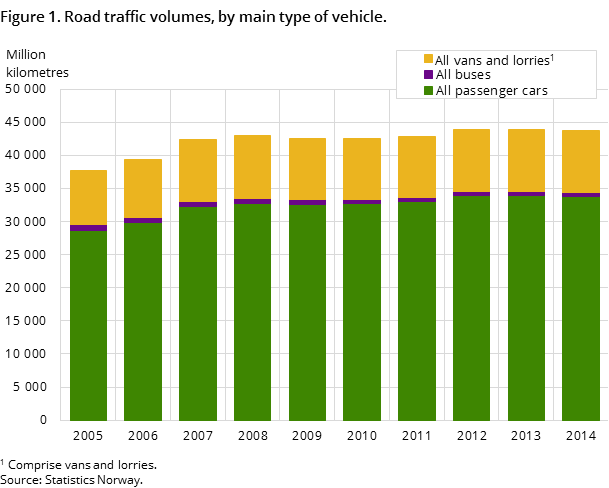
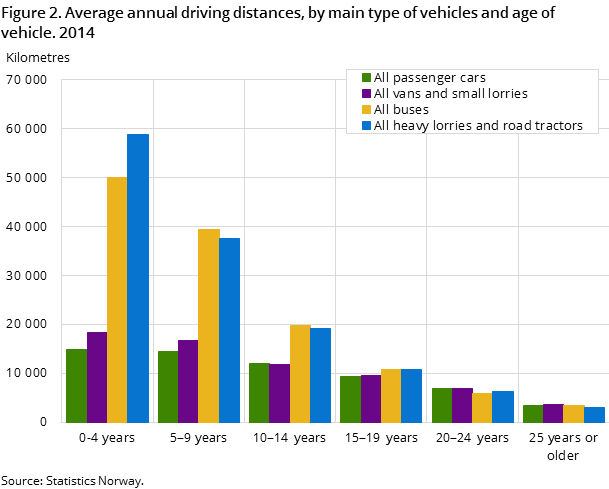
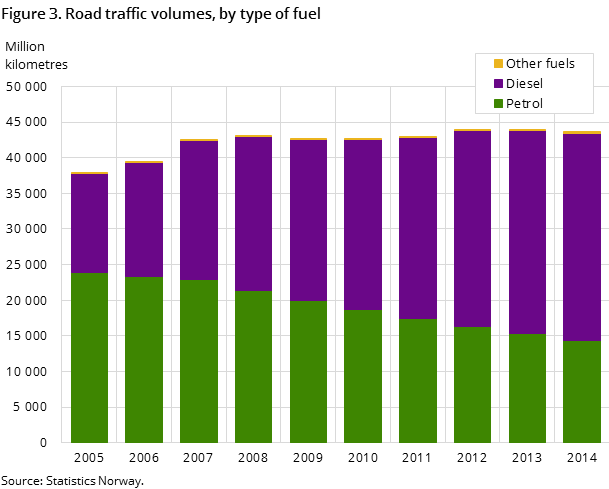
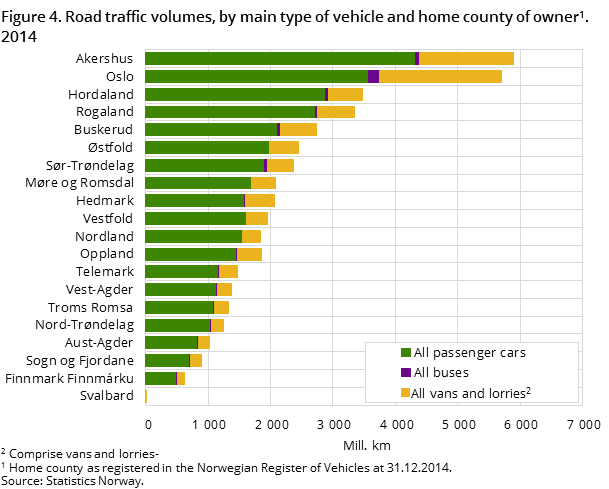
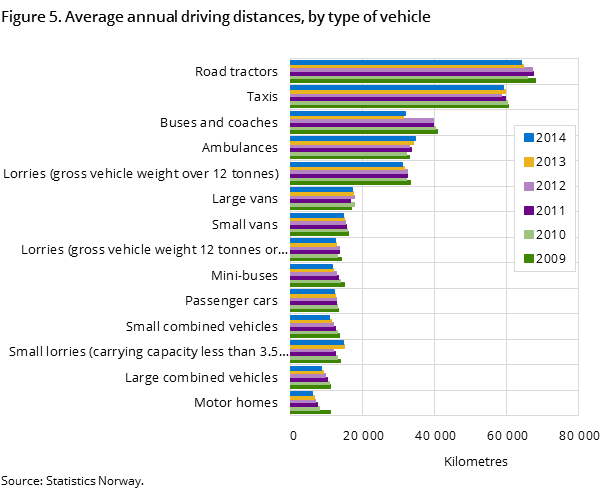
Growth in passenger car fleets from 2013 to 2014 curbed the reduction in the total mileage for passenger cars. The statistics show a decline in personal cars' average annual mileage of 13 523 kilometres in 2013 to 13 264 km in 2014; a decline of almost 2 per cent. In 2014, buses were driven an average of 31 966 kilometres, and heavy lorries 35 686 kilometres. The vehicle group that was driven by far the farthest is road tractors, and the average for these in 2014 was 63 980 kilometres.
Newest cars account for 33 per cent of the driving
About every three kilometres were driven in a passenger car that is less than five years old. New cars are driven relatively farther than older cars. Trucks and buses are driven very far in the first years of life. Heavy lorries (lorries with a carrying capacity of 3.5 tonnes or more) that were four years old or newer, were driven an average of 58 872 kilometres in 2014. Passenger cars that were four years old or newer were driven an average of 14 912 kilometres in 2014. A new road tractor (less than five years old), were driven an average of 83 327 kilometres.
Diesel vehicles driven the most
Diesel-powered road goods vehicles, buses and passenger cars were driven a total of 28.9 billion kilometres in 2014, while the corresponding petrol vehicles were driven a total of 14.4 billion kilometres. Norwegian diesel vehicles have been driven farther than petrol vehicles for several consecutive years since 2008. Vehicles powered by fuels other than petrol and diesel were driven 368.6 million kilometres in 2014, compared with 162.2 million kilometres in 2013.
Vans are still dominating
In 2014, small and large vans were driven a total of nearly 6.8 billion kilometres. This is about the same mileage as in 2013, and corresponded to 15.6 per cent of total vehicle kilometres in 2014. By comparison, the large trucks drove 2.0 billion kilometres in 2014; 1.3 per cent more than in 2013. The distance covered by small goods vehicles decreased by 11.8 per cent from 2013.
Rapid growth in the number of electric cars
Despite the rapid increase in electric cars in Norway, they still only make up around 1 per cent of the vehicle fleet. From 2013 to 2014, mileage for electric cars increased from 106.6 million kilometres to 313.0 million kilometres. This amounted to only 0.7 per cent of the total kilometres driven. The average annual mileage for electric vehicles was 7 800 kilometres.
Cars from Oslo and Akershus keeps trend
Cars in total, which are registered in Oslo and Akershus, covered the largest annual average mileage, with 14 808 and 14 353 kilometres respectively in 2014. Passenger cars registered in Oslo were on average driven 11 481 kilometres in 2014. This was the lowest in the country. The highest average mileage was for cars registered in Aust-Agder, with 13 2161 kilometres.
Contact
-
Henrik Bråthen
E-mail: henrik.brathen@ssb.no
tel.: (+47) 40 81 14 03
-
Geir Martin Pilskog
E-mail: geir.martin.pilskog@ssb.no
tel.: (+47) 40 81 13 83
-
Nataliya Granerud
E-mail: nataliya.granerud@ssb.no
tel.: (+47) 40 81 13 96
